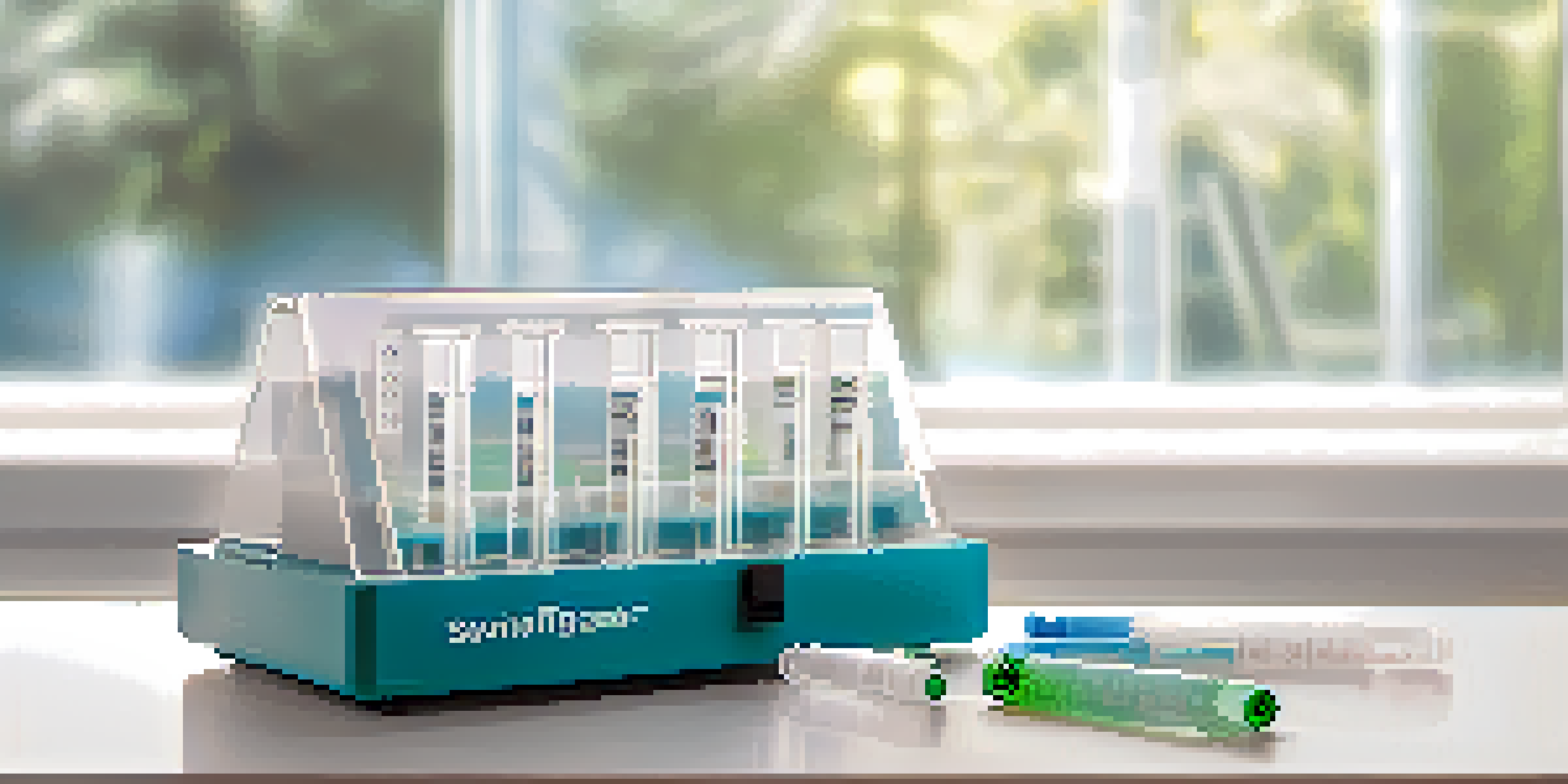Evolving Drug Testing Methods for Marijuana Detection

Understanding Marijuana and Its Detection Challenges
Marijuana, often used both recreationally and medicinally, poses unique challenges for drug testing. Unlike other substances, THC, the active component of marijuana, can remain in the body long after its effects have faded. This creates complexities in determining recent use versus past consumption, a dilemma that both employers and law enforcement face.
The greatest challenge of the marijuana testing industry is not the technology itself, but the societal perceptions and legal frameworks that govern its use.
The varying methods for consuming marijuana—smoking, edibles, oils—also affect the detection window of THC in the body. Different testing methods can yield different results, complicating the interpretation of findings. Understanding these nuances is crucial for anyone involved in drug testing.
Moreover, with the growing acceptance and legalization of marijuana in many regions, the need for accurate and reliable testing methods has never been more pressing. As a result, researchers and technology companies are continually exploring innovative solutions to enhance detection capabilities.
Traditional Drug Testing Methods: Pros and Cons
Traditional methods of drug testing, such as urine analysis, have been the go-to for many years. These tests are generally cost-effective and easy to administer, making them popular among employers. However, they come with limitations, particularly regarding the detection of recent impairment versus past use.

For instance, a person may test positive for THC days or even weeks after consumption, leading to potential misunderstandings about their current state. This can be particularly problematic in safety-sensitive occupations where impairment needs to be accurately assessed.
Challenges of Marijuana Detection
The prolonged presence of THC in the body complicates distinguishing recent use from past consumption.
Additionally, some traditional tests can be manipulated or provide false positives, prompting a need for more reliable alternatives. As society shifts toward more nuanced views on marijuana use, it’s essential to rethink these conventional testing methods.
Emerging Technologies in Marijuana Testing
In recent years, new technologies have emerged that promise more accurate and timely detection of marijuana use. For example, saliva tests are gaining popularity due to their ability to indicate recent usage, often within a few hours. This method can be particularly effective for on-the-spot testing in roadside situations.
Just as we have adapted to the realities of alcohol testing, we must evolve in our approach to marijuana testing to reflect its complexities accurately.
Another exciting development is the use of breath analyzers specifically designed to detect THC levels in real-time. Just as breathalyzers have become standard for alcohol testing, these devices could revolutionize how we assess marijuana impairment in various settings.
Moreover, advancements in lab testing techniques, such as liquid chromatography-mass spectrometry, allow for more precise measurements of THC and its metabolites. These innovations are paving the way for a future where drug testing is more meaningful and fair.
The Role of Biosensors in Drug Testing
Biosensors represent a fascinating frontier in drug testing technology. These devices can detect specific biological markers, providing real-time data on drug presence in the body. For marijuana, biosensors could potentially measure active THC levels, offering a clearer picture of impairment.
The convenience of portable biosensors means testing can occur on-site, whether at work or on the road, which could significantly streamline the process. Imagine a scenario where a driver is tested for impairment using a quick, non-invasive biosensor—this could change the landscape of road safety.
Emerging Testing Technologies
Innovative methods like saliva tests and biosensors promise more accurate and timely detection of marijuana impairment.
However, as with all new technologies, the accuracy and reliability of biosensors are still under scrutiny. Continued research and development will be essential to ensure these devices can deliver consistent and trustworthy results.
Legal and Ethical Implications of New Testing Methods
As drug testing methods evolve, so do the legal and ethical conversations surrounding them. The accuracy of testing methods can directly influence legal outcomes, especially in criminal cases or employment situations. This raises questions about the fairness of using outdated methods that may not accurately reflect an individual’s current state.
Furthermore, there is a growing concern about privacy and consent when it comes to drug testing. Individuals may be apprehensive about the implications of real-time monitoring, especially with technologies like biosensors or saliva tests that could be used without their explicit knowledge.
Balancing the need for safety with individual rights is an ongoing challenge. As new testing methods are developed, it will be crucial for lawmakers to create regulations that protect both public safety and personal privacy.
Future of Marijuana Drug Testing: What to Expect
Looking ahead, the future of marijuana drug testing will likely be shaped by ongoing advancements in technology and shifts in societal attitudes. As more states and countries move toward legalization, the demand for reliable testing methods will increase. This may lead to a standardization of testing protocols across different industries.
We can also expect to see more research into the effects of marijuana on performance and impairment, helping to inform testing methods and policies. Understanding the nuances of how marijuana affects individuals differently will be key to creating fair testing environments.
Legal and Ethical Considerations
The evolution of drug testing raises important legal and ethical questions about privacy, accuracy, and individual rights.
Ultimately, the goal will be to create a testing framework that accurately reflects usage and impairment, ensuring safety without infringing on personal freedoms. The conversation around marijuana testing is just beginning, and it promises to evolve in exciting ways.
Conclusion: Navigating the Changing Landscape of Drug Testing
As we navigate the changing landscape of marijuana drug testing, it's essential to stay informed about the latest developments. With traditional methods facing scrutiny and new technologies on the rise, the testing environment is in a state of flux. This evolution presents both challenges and opportunities for employers, law enforcement, and individuals.
By understanding the complexities of marijuana detection, we can advocate for testing methods that are accurate, fair, and respectful of personal rights. As society’s views on marijuana continue to shift, so too must our approaches to testing and enforcement.

In the end, the focus should be on creating a safe and responsible environment while also ensuring fairness and clarity in the process. The future of drug testing is bright, and it’s up to us to guide it toward a balanced approach.